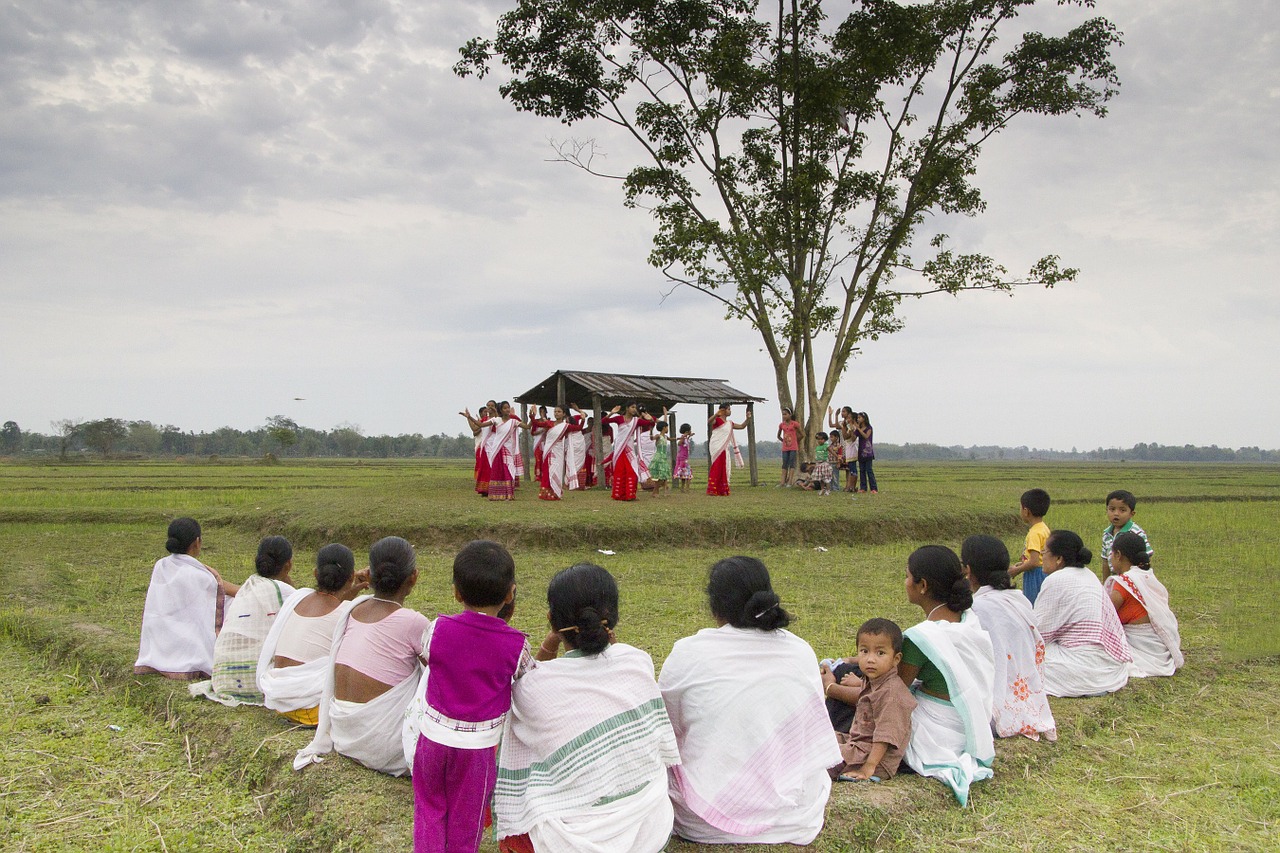Bihu Festival in the Indian Society – Probing into Traditions and Translation
Bihu is the most celebrated festival of Assam. Assam is one of the Indian states that became independent in 1947, right after the independence of India. One can say that if mentioning Assam, it is kind of compulsory to mention Bengal. It is because during partition, these two states were Muslim majority areas, and according to the rule, they should have been a part of Pakistan. However, these states were made a part of India. And today they contribute heavily to the agricultural sector of India.
This short read talks about the celebration of the famous Assamese festival in India and how translation, such as Hindi translation services, play a crucial role in it.
What is the Bihu Festival?

Bihu is one of the cheerful festivals of Assam. This festival celebrates the transition of seasons. It is an event of prosperity and blessing for the people. People commemorate the season of harvest that brings food for them. This festival is an Assamese way of saying thanks to God for all of His blessings. This year, 2023, Bihu was celebrated from 14th to 20th April. This festival involves a whole week of festivities and food where people indulge in dances.
Mainly, this festival is the celebration of the Assamese New Year. Tourists from all over the world especially come to Assam for the big celebration of New Year. Originally, there were three types of Bihu festivals: Bohag or Rongali Bihu, Kati or Kongali Bihu, and Magh or Bhogali Bihu. The names differ because of the different dialects of the Assamese language.
The main event is the Bohag Bihu, which is celebrated in April. During the celebration of the other two, Kati Bihu comes in October and Magh Bihu in January. A greater significance is granted to Bohag Bihu which is why you will notice the involvement of the tourism industry in Assam in April the most. Certified Assamese translation services are provided to tourists who are familiar with the different Assamese dialects in order to ensure perfection.
Types of Bihu Festival
Bohag Bihu (Rongali Bihu):

Bohag Bihu, resonating in April, heralds the Assamese New Year amid the bloom of spring. In its week-long celebration, homes come alive with the spirit of renewal. Traditional attire adorns the joyous locals as they immerse themselves in the rhythmic cadence of Bihu dances, fostering a cultural symphony that echoes the optimism for a prosperous harvest.
Kati Bihu (Kongali Bihu):

As October unfolds, Kati Bihu emerges as a humble prayer for abundance. Lasting but a day, it beckons a solemnity reflective of its agrarian essence. In the quiet glow of earthen lamps, prayers for a plentiful harvest are whispered. This subdued celebration, rooted in the heart of the harvest season, captures a community’s quiet reliance on the land’s bounty.
Magh Bihu (Bhogali Bihu):

With the arrival of January, Magh Bihu beckons the culmination of the harvest, resonating with the warmth of community and feasts. Lasting a fleeting moment, this festival invites locals to gather around Mejis, igniting bonfires that symbolize unity. The aroma of freshly harvested crops wafts through the air as shared meals underscore the collective gratitude for nature’s abundance, transcending into a communal celebration of sustenance.
Translation and Bihu Representation in India
You might be wondering about the role of translation in the celebration of an Assamese festival. However, this role is very important. One thing that translation advocates the most is making the transition in the language is the cultural acceptance for the audience. For example, professional Hindi translation services translate the core concepts of this festival for the huge Hindi-speaking audience. This piques the interest of the Hindi-speaking community and enables good relations with the major Muslim community in Assam.
How people celebrate festivals of communities and religions different from theirs speaks a lot about them. It shows the integrity of a person. Indians are famous for their hospitable nature and how interest they take in maintaining integrity and peace in their country.
The different types of Bihu festivals play another important role as they bring the people closer. Different myths and folklore about the Bihu tradition are talked about in the town during the celebration, capturing the attention of people. Tourists play a major role in the propagation of this culture. These tourists belong to different regions, and they take such useful information with them back to their countries.
Representing Bihu Festival Through Art and Literature
Another major representation of the Bihu festival in India is in the form of visual and vibrant paintings and the form of words. Graffiti on walls, especially during April, illustrates how much Indians are into this auspicious festival. Assamese translation services translate Assamese literature both from Assamese to Hindi and Hindi to Assamese to cater to both Assamese and Hindi-speaking audiences.
It builds people’s perspective about the occasion and adds to their knowledge. One thing with which you might not be aware is that the word Bihu has a history in Sanskrit. Other than that, it also belongs to the Dimasa Kacharis language, which is now extinct. The word literally means asking for prosperity from God. And this is the whole concept behind this celebration.
Books written on this occasion provide us with in-depth knowledge and also how this festival relates to religion. Despite the Muslim majority population in Assam, these people celebrate Bihu on the first Hindu month, which is Chaitra. This sole act shows how much integrity is between Indian Muslims and Hindus.
Final Words!
Indian society celebrates festivals of different ethnic groups to maintain peace. Bihu is the famous Assamese festival that the people of Assam celebrate every year with great enthusiasm. With the help of art and literature, knowledge about these festivals is propagated to the right audience. Wall paintings and graffiti represent street art along with the preference of people in promoting different cultures.

















